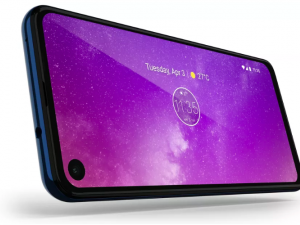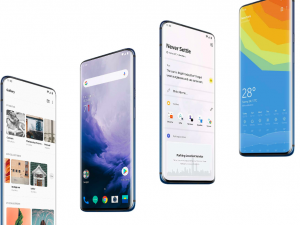The Best Phones Of MWC 2019
Damien McFerran 01/03/2019 – 8:59am
Our top picks
Mobile World Congress is over for another year, and while the lack of true innovation was slightly worrying, there were still plenty of phones to get excited about. We've picked out the handset we think are going to be the ones to watch this year, so if you're on the fence about an upgrade, this is the list to consult.
Huawei Mate X
Folding phones were the big headline news at this year's show, although only two companies actually showed off handsets with folding screens: Huawei and Samsung. Interestingly, both companies took a slightly different approach, with Huawei's design wrapping the screen around the outside of the device. It says a lot about Huawei's enhanced standing in the smartphone arena that it is competing with Samsung on technological terms as well as for market share, and while there are still questions about the durability of that screen (and the ergonomics of a display that covers almost every inch of the device) the Mate X will be one to watch in 2019.
Samsung Galaxy Fold
MWC's other big announcement was the Galaxy Fold, Samsung's much-hyped folding handset. With a cost of around £2,000, this is a premium device that will be in short supply this year, but it's sure to get tech-heads salivating – although the curious promo video (shown above) was a curious way of pushing the handset; what happened to the soundtrack? Questionable marketing choices aside, the Fold is going to be one of 2019's most talked-about smartphones, and how it performs may well decide how the market reacts to these super-expensive folding devices.
Sony Xperia 1
Sony has traditionally struggled for market share, but it has soldiered on regardless and this year is hoping that the Xperia 1's 21:9 'CinemaWide' 4K HDR OLED display will be enough to get it noticed against the likes of the Galaxy S10 and Apple's next iPhone. That tall, thin screen might take some getting used to, but the triple-lens camera system is an easier sell; you've got a 16mm sensor for wide landscapes, a 26mm lens and a 52mm for 2x optical zoom. It also has eye-tracking software built in, too. On paper it's one heck of a phone, and it actually offers something a little different to the crowd – but time will tell if that translates into sales.
LG G8 ThinQ
LG's flagship device this year is boasting what it calls the best OLED panel in the world – which is some reach when you consider the company's woeful track record with OLED technology. However, early reports suggest that the 6.1 panel is actually really good, so perhaps the Korean firm is on to something here. What's beyond dispute is how great this device looks; it's one of the slickest phones we've seen in years and could put LG back on the map after a few years in the smartphone wilderness.
LG V50
With folding screens gobbling up so many column inches, we have to applaud LG's attempt to gatecrash the party with a much cheaper solution. The LG V50 – a nice-looking device by all accounts – can be paired with a special case which features a second screen, effectively doubling your display real estate and giving you an approximation of what it feels like to own a folding phone without having to spend £2,000. It's not the most elegant solution – the screens are different sizes, for starters – but you have to admire LG's spunk here.
Nokia 9
Nokia – or, to be more precise, hardware licensee HMD, which makes phones under the famous name – has pulled itself back into the game after almost vanishing a few years back, and is hoping that the Nokia 9 will be the device to bring the good times back again. It's packing a whopping five rear-facing cameras, which means it comfortably wins the sensor war based on pure metrics alone. However, we know that more cameras don't always mean better shots – just look at the Pixel 3 – and it remains to be seen if the Nokia 9's cluster of snappers will enable it to take top-quality photos. Still, it's a headline-grabbing design and it works, it could change the way we look at smartphone photography forever.




